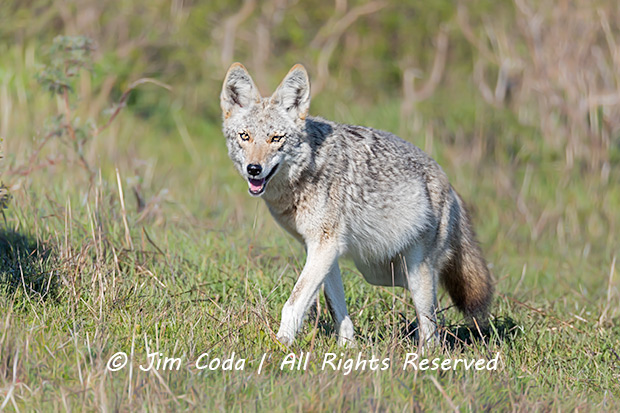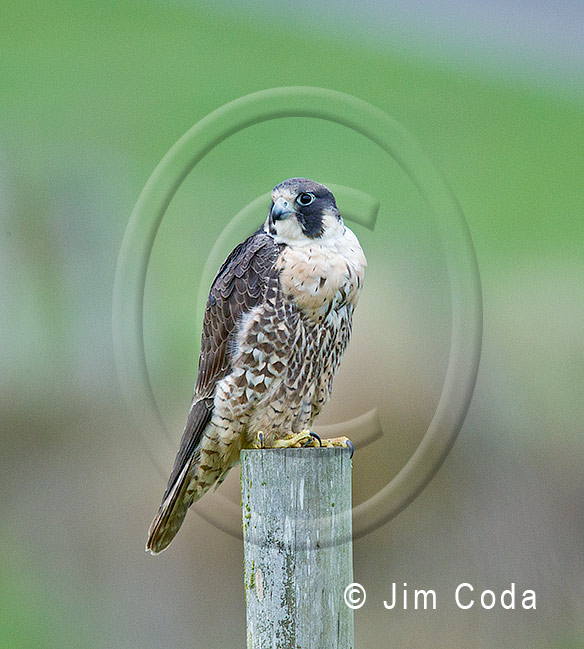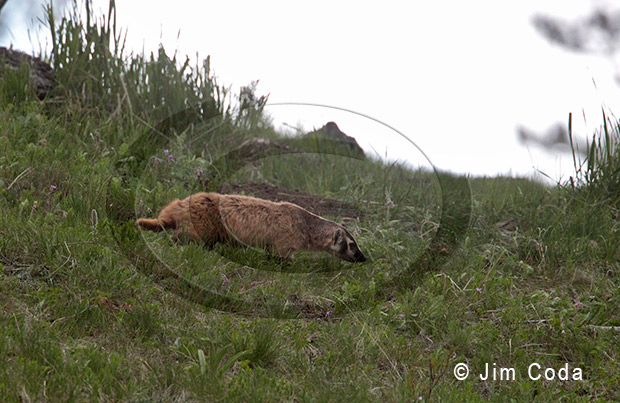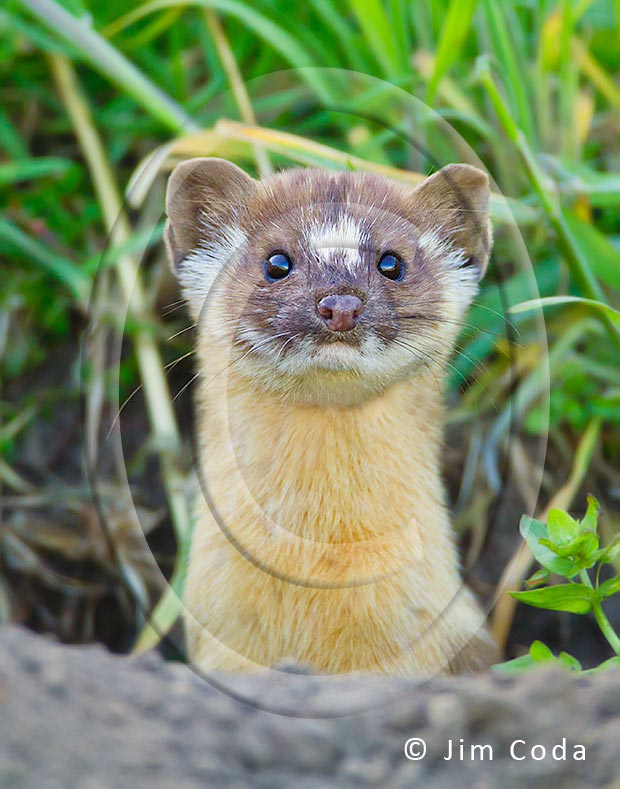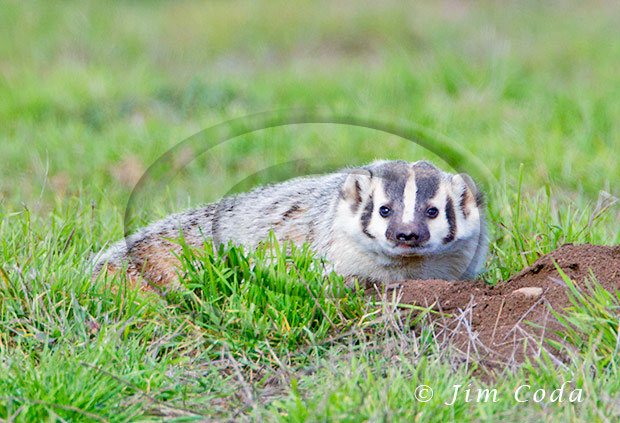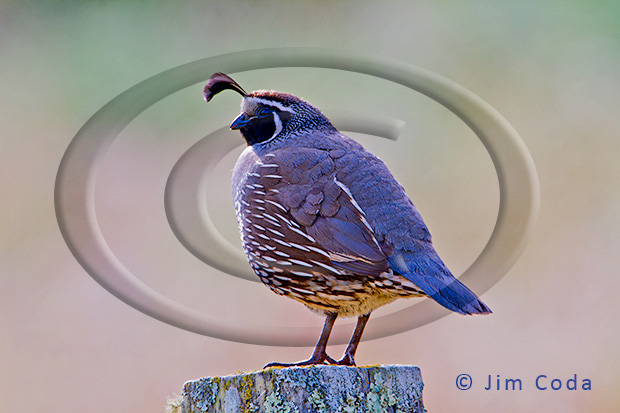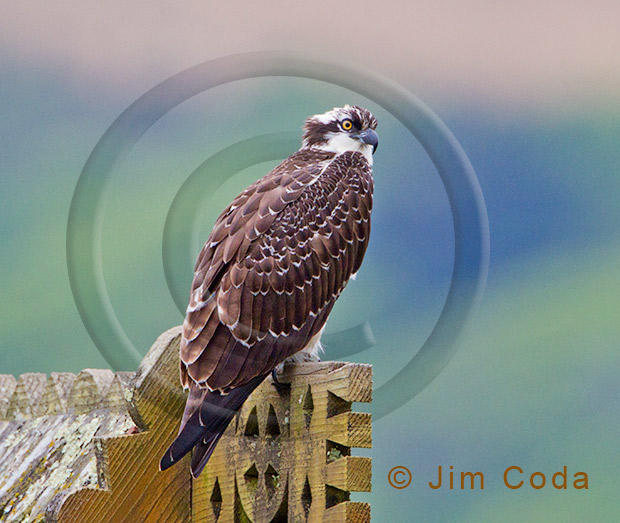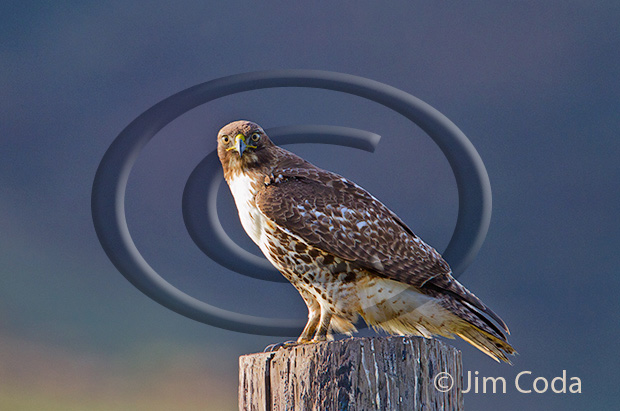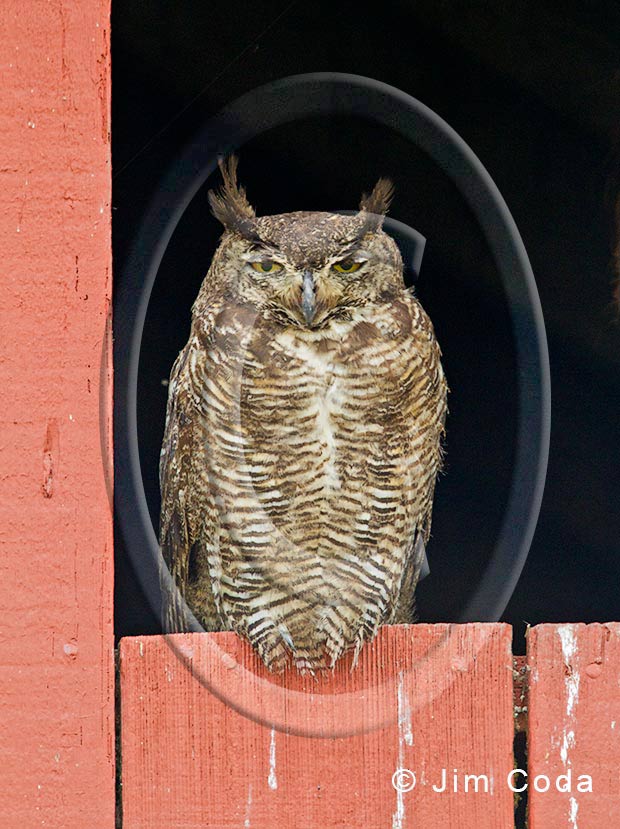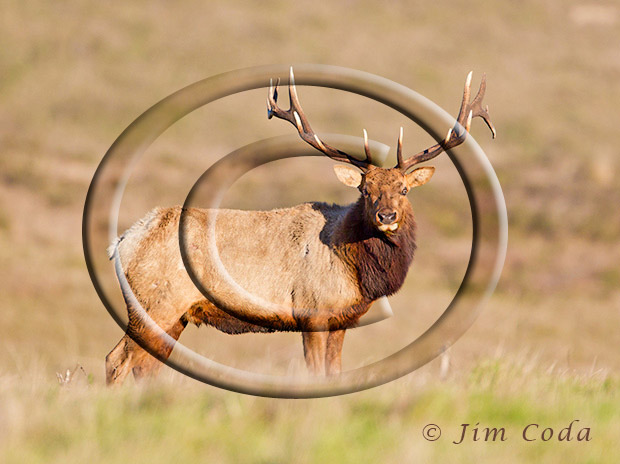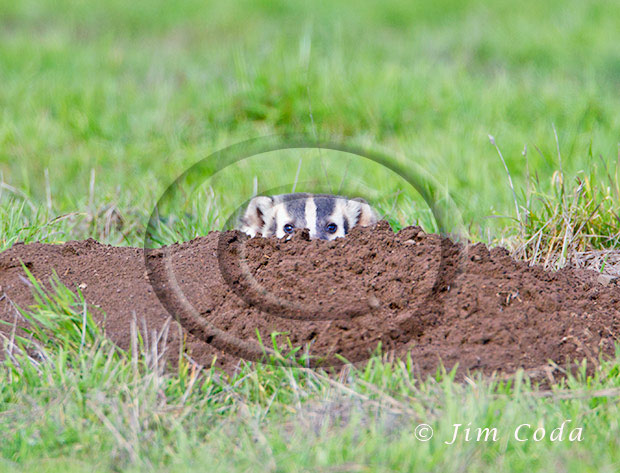Handicapped Badger, Point Reyes National Seashore
I was out at Point Reyes yesterday and it was kind of slow. I saw a couple of coyotes, but wasn’t able to get a good photo of either of them. I didn’t see any bobcats. I did see a mature bald eagle, but it was flying too far away for a good photo. Things picked up in the mid-afternoon, however, when I spotted this badger. It was actively hunting gophers. The light was OK, but not great, because of strong side-lighting. I opened up the shadow on its left side (right side for viewer) to bring out detail in its fur.

What you see is the full image. However, as I was working on the photo in Photoshop I cropped it a bit to remove some of the little hillock in front of the badger. Then I needed to remove some of the photo on the other three sides for a better composition. As I was doing that I thought the animal’s right eye (left eye from viewer’s standpoint) looked odd. So, I magnified the photo. It then became clear that the badger had a serious eye problem. I assume it’s completely blind in its right eye.
To make the eye visible at the relatively small image size required by my blog, I had to do a severe crop.

I’m always touched by animals that have injuries or handicaps. I hope this badger manages to live a normal life span. I don’t know how its eye came to be the way it is. It reminds me that I saw another badger at Point Reyes six years ago that looked completely blind in the same eye. It was a female with two cubs. Her eye was completely white, but not recessed looking like this eye. I suppose it could be the same badger, but it could also be another. I’ve started to wonder if eye problems are not that rare for badgers for some reason.


